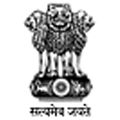The rate at which the stock markets, and the Indian market in particular, gyrate to sentiments can give any belly dancer a run for her money. So the poser for anyone tracking the S&P BSE Sensex, the 30-stock benchmark index in India, would be whether the recent upsurge in share prices (index is up 14 per cent in last two weeks) is simply a dead-cat bounce or something more fundamental is at play.
Indeed, the economy is not out of the woods as the fall in rupee (which is down by a fifth compared to the level it was a few weeks ago even after a bounce in the last few days) has flared up prices of imported fuel. Its impact is expected to flow into inflation in the coming weeks which may tie the new RBI governor’s hand in loosening monetary policy. Interest rates remain high, restraining businesses from pedalling up a new investment cycle and poor growth has filtered through the job market hitting consumer sentiment.
While the government has pushed through some policy reforms in the extended monsoon session of the Parliament, the more trickier and bold reforms which long-term investors are looking forward to may not happen soon enough with an election due next year. While there is political uncertainty at home, geopolitical flashpoint in Syria has only got a temporary relief. But there are a lot of positive takeaways to draw comfort from.
Here’s a quick take on what supports the sudden infusion of positive sentiment in the economy and the markets and what shows that it’s not time to uncork the bubbly.
Early signs of discretionary spend picking up: Automobile sales are a critical indicator of consumer sentiment and the latest data for August shows there is reason to be optimistic. Car sales rose an estimated 15.4 per cent last month, for the first time since October 2012. Auto sales, which dipped in 2012-13 for the first time in a full year during the last decade, and has been on a slide, rose even ahead of the festival season despite high fuel prices and high cost of borrowing, which push up cost of ownership.
Exports get a leg-up, trade deficit shrinks: This one is more tenuous. Merchandise exports are estimated to have risen in double digits in July and August. Merchandise exports are estimated to have grown 11.6 per cent in July, the fastest in 18 months and early indications are that this has accelerated to 12.97 per cent in August. This has also narrowed India's trade deficit to $10.9 billion last month.
Credit off-take on upswing: The net addition to outstanding bank credit in the first four months of the current fiscal year has shot up 82 per cent to Rs 1.24 lakh crore. This had risen by a mere 5.9 per cent the previous year over 2011 after declining by more than a third in the preceding year as the economy was seeing the backwash effects of the financial crisis, which sucked out liquidity and firms turned cautious on investing while banks tightened their purse strings. The absolute addition to bank credit in the current fiscal also hit an all-time high, surpassing the previous record of Rs 1.04 lakh crore in the first four months of 2005. Although the data do not show how much of this is to retire old debt, it shows economic activity is looking better.
Industrial activity up, capital goods shine: Latest data show manufacturing and utility sectors were showing an uptick buoying the overall industrial activity in July. This came after two months of decline in industrial output. What is even more encouraging is that the capital goods sector clocked double-digit growth. Production of capital goods is a lead indicator of future industrial activity as it shows up as capacity building and an investment.
Rajan, monsoon, détente in Syria: The new chief of RBI had a blockbuster debut last week announcing a string of small initiatives which have already given the much needed support to the rupee. This has also, by default, partially deflated a much feared impact of ballooning of the trade deficit. The monsoon rains which still ensures irrigation for around half of the agricultural sector means rural income is expected to be buoyant over the next few months. This in turn means rural demand for products and services should be good for makers of consumer products. Last, but not the least, the latest global flashpoint in Syria seems to have been injected with a tranquiliser in what is seen a diplomatic guffaw. Given that the country was close to being hit by the west over alleged use of chemical weapons, which in turn had flared up fuel prices, the development means at least a temporary reprieve to investors.
Having said that……
Commercial vehicle segment in slumber: While car and bike sales showed a glimmer of hope for revival last month, commercial vehicle sales, which are a barometer of business activity, continue to dip. Sales of trucks almost halved last month in the second-worst performance in five years. This means business activity is yet to see a convincing uptick. Moreover, the rise in sales of passenger vehicles is attributed to a base effect as the country’s top carmaker had a lockout in the same period last year. One would have to watch data for at least one more month to see a clear sign of revival in auto sales and thereby consumer discretionary spend.
Inflation, fiscal deficit snowball: While analysts may be on the right path to conclude that the days of double-digit headline inflation is over, the real impact of the sharp rise in fuel cost and that of onion (which affects consumer inflation more than wholesale price inflation) recently is yet to play out in statistics. The sharp rise in price of onion has also hit consumer pockets and despite efforts to douse the fire ahead of next year’s general election, it is yet to see any moderation. If that’s not bad enough, the optimistic view on containing fiscal deficit looks hollow in the wake of fiscal deficit hitting almost two-thirds of the budgetary estimate for the year during the first four months of the current financial year. With the impact of populist measures such as the recent food security bill to start soon the government expenses is likely to move up north.
Exports growth could be statistical mirage: The impact of the sharp depreciation of the Indian currency could have resulted in short-term jump in export earnings. This could dissipate in the coming months and indeed weeks. Structural reforms for improving exports competitiveness is not something to be expected in the near term to support the recent rise in dollar earnings from merchandise trade.
GDP growth estimates for FY14 cut, officially: This is more of a correction of what was a fairly optimistic view of the economy. The economic advisory council of the prime minister has now officially snipped the growth forecast for the current year to a more realistic 5.3 per cent as against previous estimate of 6.4 per cent for FY14. While this is higher than the 5 per cent growth clocked in the previous year it doesn’t make the country as attractive as an emerging market.
The great Indian general election jamboree still months away: Businessmen and investors in particular hate uncertainty and as if the so-called policy paralysis of the past four years was not enough, it’s still over six months before the world’s largest democracy elects its new policymakers which means short-term policy coma. The government extended the monsoon session of the Parliament and pushed through some pending reforms but they are not enough to get the economy off the tarmac; indeed some of those measures are seen as retrograde given their impact on fiscal deficit.
And we are not even talking about QE…
(Edited by Joby Puthuparampil Johnson)






